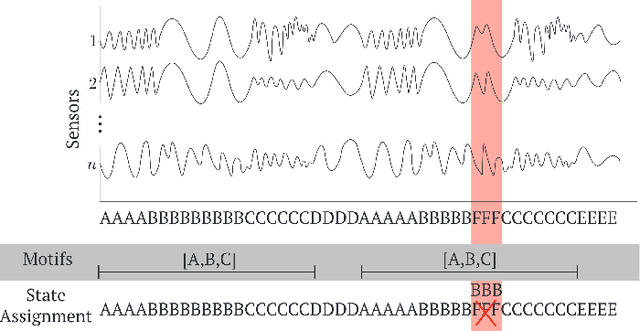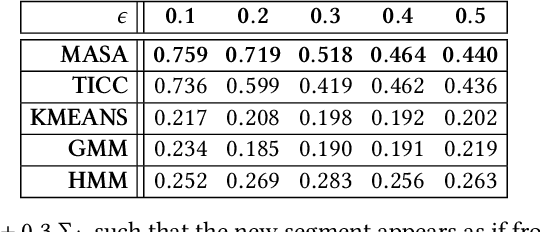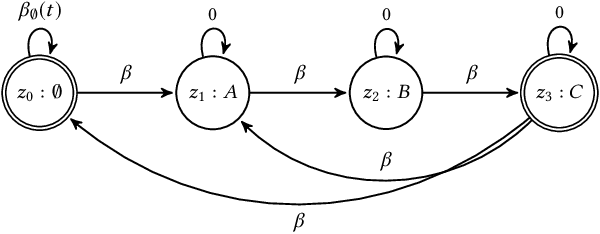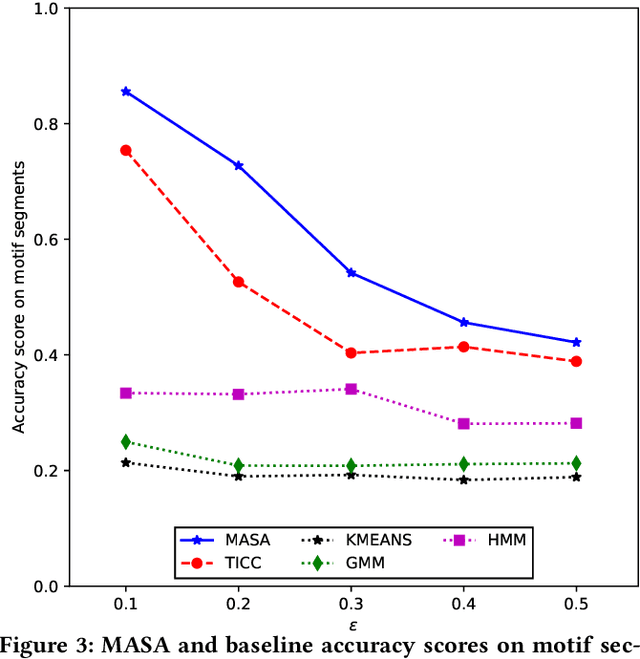CASC: Context-Aware Segmentation and Clustering for Motif Discovery in Noisy Time Series Data
Paper and Code
Sep 06, 2018



Complex systems, such as airplanes, cars, or financial markets, produce multivariate time series data consisting of system observations over a period of time. Such data can be interpreted as a sequence of segments, where each segment is associated with a certain state of the system. An important problem in this domain is to identify repeated sequences of states, known as motifs. Such motifs correspond to complex behaviors that capture common sequences of state transitions. For example, a motif of "making a turn" might manifest in sensor data as a sequence of states: slowing down, turning the wheel, and then speeding back up. However, discovering these motifs is challenging, because the individual states are unknown and need to be learned from the noisy time series. Simultaneously, the time series also needs to be precisely segmented and each segment needs to be associated with a state. Here we develop context-aware segmentation and clustering (CASC), a method for discovering common motifs in time series data. We formulate the problem of motif discovery as a large optimization problem, which we then solve using a greedy alternating minimization-based approach. CASC performs well in the presence of noise in the input data and is scalable to very large datasets. Furthermore, CASC leverages common motifs to more robustly segment the time series and assign segments to states. Experiments on synthetic data show that CASC outperforms state-of-the-art baselines by up to 38.2%, and two case studies demonstrate how our approach discovers insightful motifs in real-world time series data.
 Add to Chrome
Add to Chrome Add to Firefox
Add to Firefox Add to Edge
Add to Edge